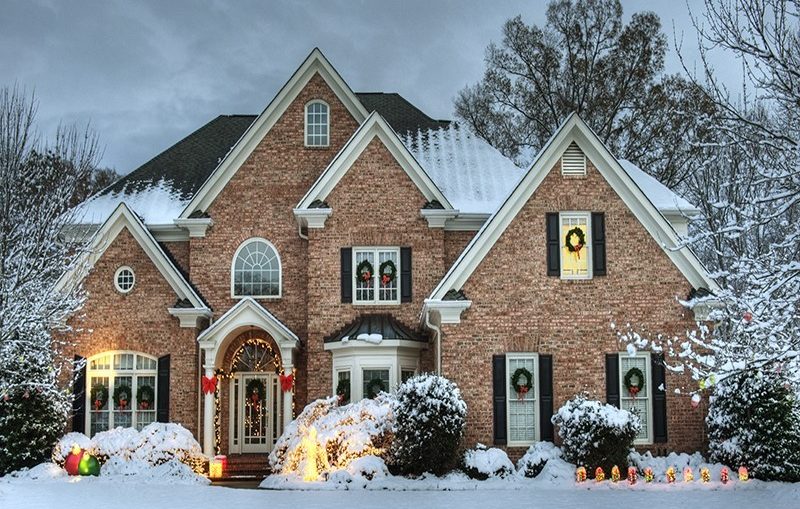
With Fall coming to an end, you can surely feel the chill in the air of approaching winter. In the colder months, it can be difficult and costly to keep your home sufficiently warm. Be sure it will be ready to take the beating of snow, inclement weather, and of course, cold. Taking measures to winterize your house before the big freeze can not only help protect your home but help save you conserve energy. Your bank account will surely thank you.
Clean your gutters.
Before winter arrives, make sure you clean the gutters thoroughly. Remove all leaves and dirt build-up. You want to make sure any runoff can easily pass through from melting snow or icy rains. Our friends at Southern Maryland Roofing say clogged gutters can lead to damaged trim and siding. If water cannot pass through gutters, it may create ice dams which can lead to leaks in the house. If you notice any dead or weak, low hanging tree limbs that overlook the house, try to remove them so that heavy setting snow won’t cause them to break and damage the roof or siding of your home.
Check for leaks or breaks in your roof.
If there are any missing or loose shingles, cracks in the roof, or gaps near a chimney, take the time to seal them up before it gets too cold. Water or ice can get in and these repairs are both difficult in the winter, and costly if the damage worsens.
Shut off all outside water supply (water lines, faucets, and hoses).
Cold temperatures can cause pipes to break or lines to freeze. Be sure to shut off all exterior water faucets, hoses, and turn off any sprinkler systems. Seal up any additional water leaks around the home. Disconnect your hoses and store them inside. Any water that’s left inside the hose can freeze and damage the hose or pipes.
Insulate your windows.
Window insulation film is an inexpensive way to make sure warm air stays in and the cold air stays out. The plastic film easily attaches to the interior of the window frame. This can keep up to 70% of the heat in your home from escaping. You can also purchase heavy curtains which will help keep the cold air from passing through.
Invest in a programmable thermostat.
Regulating the temperature in your home can help you save a significant amount of money on your heating bill. For each degree you lower the temperature, you can save 1% on your heating bill. You can preset temperatures according to your schedule to ensure you are not using unnecessary heat and you can also regulate temperatures via WiFi for some updated thermostats.
Replace your furnace filter.
Check your filter on a monthly basis, both leading up to and during winter. Replace as needed and do not delay. This will help keep your home heated most efficiently. This will help save you money on the utility bill since the heat will flow through easily and there won’t be any blockage due to a clogged filter. It will also help keep your furnace running longer, saving you money from having to install a new one. Furnace filters are easy to install and are cost-effective in the long run.
Winterize your siding.
This involves inspecting and resolving any issues in its spaces and on its surfaces. Many sidings are very low maintenance. You should still take care to ensure there are no cracks or weak spots. Big siding can help keep water out of your home, which is especially important in the winter when snow is melting. New sturdy siding can also help keep bugs and other critters away from your home when they are trying to escape the cold weather.
Winterizing your home will help you get through the winter comfortably, and help you save on your utility usage. It is also a great way to ensure that your home gets the least possible weather damage as possible throughout the harsh season. Be sure to take the proper precautions when the temperatures start to dip so that you and your home are protected throughout the season.
